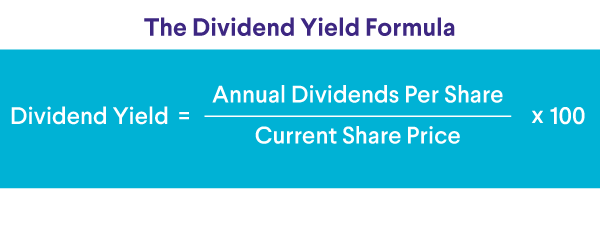The Ultimate Guide to SIMPLE IRAs for Employees and Small Businesses
SIMPLE IRA is a tax-advantaged retirement account that can help self-employed individuals and small business owners save and invest for the future.
You may already be familiar with traditional individual retirement accounts (IRAs). A SIMPLE IRA, or Saving Incentive Match Plan for Employees, is similar to a traditional IRA in that it’s also a tax-deferred account. But the contribution limits for SIMPLE IRAs are higher, and the tax treatment of these plans is slightly different.
Also, SIMPLE IRAs require employers to provide a matching contribution.
What Is a SIMPLE IRA?
SIMPLE IRA plans are employer-sponsored retirement accounts for businesses with 100 or fewer employees. They are also retirement accounts for the self-employed and sole proprietors. If you’re your own boss, and thus self-employed, you can set up a SIMPLE IRA for yourself.
For small business owners and the self-employed, SIMPLE IRAs are an easy-to-manage, low-cost way to contribute to their own retirement — while at the same time helping employees to contribute to their savings as well, both through tax-deferred, elective contributions, and a required employer match.
SIMPLE IRAs offer higher contribution limits than traditional IRAs (see below), but employers and employees still benefit from tax advantages like tax-deferred growth and contributions that are either deductible (for the employer) or reduce taxable income (for the employee).
How Does a SIMPLE IRA Work?
A SIMPLE IRA is one of many different types of retirement plans available, but it can be appealing for small business owners and those who are self-employed owing to the lower administrative burden.
That’s because, unlike a 401(k) plan (which requires a plan sponsor and a plan administrator, as well as a custodian for employee assets), a SIMPLE IRA basically enables the employer to set up IRA accounts at a financial institution for eligible employees — or allow employees to do so at the financial institution of their choice.
Once the plan is set up and contributions are made, the employee is fully vested (i.e., they have ownership of all SIMPLE IRA funds, per IRS rules), which is helpful when saving for retirement.
Employee Eligibility
In order for an employee to participate in a SIMPLE IRA, they must have earned at least $5,000 in compensation over the course of any two years prior to the current calendar year, and they must expect to make $5,000 in the current calendar year.
It’s possible for employers to set less restrictive rules for SIMPLE IRA eligibility. For example, they could lower the amount employees are required to have made in a previous two-year time. However, they cannot make participation rules more restrictive.
Employers can exclude certain types of employees from the plan, including union members who have already bargained for retirement benefits and nonresident aliens who don’t receive their compensation from the employer.
Employee Contribution Limits
Those who have a SIMPLE IRA can contribute up to $16,000 in 2024 (plus an extra $3,500 in catch-up contributions for those 50 and older).
Contributions reduce employees’ taxable income, which lowers their income taxes in the year they contribute. Contributions can be invested inside the account, and may grow tax-deferred until an employee makes withdrawals when they retire.
IRA withdrawal rules are particularly important to pay attention to as they can be a bit complicated. Withdrawals made after age 59 ½ are subject to income tax. If you make withdrawals before then, you may be subject to an additional 10%, with some exceptions, or 25% penalty (if you’ve had the account for less than two years).
Account holders must make required minimum distributions, or RMDs, from their accounts when they reach age 72 (or age 73, if you turn 72 after Dec. 31, 2022).
Matching Contributions
An employer is required to provide a matching contribution to employees in one of two ways. They can match up to 3% of employees’ compensation. Or they can make a non-elective contribution of 2% of employees’ compensation.
If an employee doesn’t participate in the SIMPLE IRA plan, they would still receive an employer contribution of 2% of their compensation, up to the annual compensation limit, which is $345,000 for 2024.
This two-tiered structure allows employers to choose whatever matching structure suits them.
💡 Quick Tip: Want to lower your taxable income? Start saving for retirement with a traditional IRA. The money you save each year is tax deductible (and you don’t owe any taxes until you withdraw the funds, usually in retirement).
Get a 1% IRA match on rollovers and contributions.
Double down on your retirement goals with a 1% match on every dollar you roll over and contribute to a SoFi IRA.1
1Terms and conditions apply. Roll over a minimum of $20K to receive the 1% match offer. Matches on contributions are made up to the annual limits.
SIMPLE IRA vs Traditional IRA
When it comes to a SIMPLE IRA vs. a traditional IRA, the two plans are similar, but there are some key differences between the two. A SIMPLE IRA is for small business owners and their employees. A traditional IRA is for anyone with earned income.
To be eligible for a SIMPLE IRA, an employee generally must have earned at least $5,000 in compensation over the course of two years prior — and expect to make $5,000 in the current calendar year. With a traditional IRA, an individual must have earned income in the past year.
Contribution Limits
One of the biggest differences between the two plans is the contribution limit amount.
While individuals can contribute $7,000 in 2024 to a traditional IRA (or $8,000 if they are 50 or older), those who have a SIMPLE IRA can contribute $16,000 in 2024, plus an extra $3,500 in catch-up contributions for those 50 and older, for a total of $19,500.
Tax Treatment
And while both types of IRAs are considered tax deferred, SIMPLE IRAs use two different tax treatments.
For example: a traditional IRA generally allows individuals to make tax-deductible contributions. With a SIMPLE IRA, the employer or sole proprietor can make tax-deductible contributions to a SIMPLE IRA — while employees benefit from having their elective contributions withheld from their taxable income.
Both methods can help lower taxable income, potentially providing a tax benefit. But withdrawals are taxed as income, as they are with a traditional IRA.
SIMPLE IRA vs 401(k)
SIMPLE IRAs have some similarity to employer-sponsored 401(k) plans. Contributions made to both are made with pre-tax dollars, and the money in the accounts grows tax-deferred.
But while a 401(k) gives an employer the option of providing matching contributions to employees’ plans, a SIMPLE IRA requires matching contributions by the employer, as noted above.
Another major difference between the two plans is that individuals can contribute much more to a 401(k) than they can to a SIMPLE IRA.
• In 2024, they can contribute 23,000 to their 401(k) and an additional $7,500 if they’re 50 or older.
• In comparison, individuals can contribute $16,000 to a SIMPLE IRA, plus an additional $3,500 if they are 50 or older.
How to Run a SIMPLE IRA Plan
SIMPLE IRAs are relatively easy to put in place, since they have no filing requirements for employers. Employers cannot offer another retirement plan in addition to offering a SIMPLE IRA.
If you’re interested in setting up a SIMPLE IRA, banks and brokerages may have a plan, known as a prototype plan, that’s already been approved by the IRS.
Otherwise you’ll need to fill out one of two forms to set up your plan:
• Form 5304-SIMPLE allows employees to choose the financial institutions that will receive their SIMPLE IRA contributions.
• You can also fill out Form 5305-SIMPLE, which means employees will deposit SIMPLE IRA contributions at a single financial institution chosen by the employer.
Once you have established the SIMPLE IRA, an account must be set up by or for each employee, and employers and employees can start to make contributions.
Notice Requirements for Employees
There are minimal paperwork requirements for a SIMPLE IRA. Once the employer opens and establishes the plan through a financial institution, they need to notify employees about it. This should be done by October 1 of the year the plan is intended to begin. Employees have 60 days to make their elections.
Eligible employees need to be notified about the plan annually. Any changes or new terms to the plan must be disclosed. At the beginning of each annual election period, employers must notify their employees of the following:
• Opportunities to make or change salary reductions.
• The ability to choose a financial institution to receive SIMPLE IRA contribution, if applicable.
• Employer’s decisions to make nonelective or matching contributions.
• A summary description provided by the financial institution that acts as trustee of SIMPLE IRA fund, and notice that employees can transfer their balance without cost of penalty if the employer is using a designated financial institution.
Participant Loans and Withdrawals
Participants cannot take loans from a SIMPLE IRA. Withdrawals made before age 59 ½ are typically subject to a 10% penalty, or 25% if the account is less than two years old, in addition to any income tax due on the withdrawal amount.
Rollovers and Transfers to Other Retirement Accounts
For the first two years of participating in a SIMPLE IRA, participants can only do a tax-free rollover to another SIMPLE IRA. After two years, they may be able to roll over their SIMPLE IRA to a traditional IRA or an employer-sponsored plan such as 401(k).
A rollover to a Roth IRA would require paying taxes on any untaxed contributions and earnings in the accounts.
💡 Quick Tip: Before opening an investment account, know your investment objectives, time horizon, and risk tolerance. These fundamentals will help keep your strategy on track and with the aim of meeting your goals.
The Advantages and Drawbacks of a SIMPLE IRA Plan
While SIMPLE IRAs may offer a lot of benefits, including immediate tax benefits, tax-deferred growth, and employer contributions, there are some drawbacks. For example, SIMPLE IRAs don’t allow employees to save as much as other retirement plans such as 401(k)s and Simplified Employee Pension (SEP) IRAs.
In 2024, employees can contribute up to $23,000 to a 401(k), plus an additional $7,500 for those 50 and over.
Individuals with a SEP IRA account can contribute up to 25% of their employee compensation, or $69,000, whichever is less, in 2024.
The good news is, employees with SIMPLE IRAs can make up some of that lost ground. Employers may be wondering about the merits of choosing between a SIMPLE and traditional IRA, but they can actually have both.
Employers and employees can open a traditional or Roth IRA and fund it simultaneously with a SIMPLE IRA. For 2024, total IRA contributions can be up to $7,000, or $8,000 for those 50 and over.
Here some pros and cons of starting and funding a SIMPLE IRA at a glance:
| Pros of a SIMPLE IRA | Cons of a SIMPLE IRA |
|---|---|
| Employers are required to provide a matching contribution for all eligible employees. | Lower contribution limits than other plans, such as 401(k)s and SEP IRAs. |
| Lower cost and less paperwork than other retirement accounts; there are no filing requirements with the IRS. | Withdrawals made before age 59 ½ are subject to a possible 10% or 25% penalty, depending on how long the account has been open. |
| Contributions are tax deductible for employers and pre-tax for employees (both lower taxable income). | Participants cannot take out a loan from a SIMPLE IRA. |
| A SIMPLE IRA may offer more investment options than a 401(k) or other employer plan. | There is no Roth option to allow employees to fund a SIMPLE account with after-tax dollars that would translate to tax-free withdrawals in retirement. |
Eligibility and Participation in a SIMPLE IRA
As mentioned previously, there are some rules about who can participate in a SIMPLE IRA. Here’s a quick recap.
Who Can Establish and Participate in a SIMPLE IRA?
Small business owners with fewer than 100 employees and self-employed individuals can set up and participate in a SIMPLE IRA, along with any eligible employees.
Employers can’t offer any other type of employer-sponsored plan if they set up a SIMPLE IRA.
Employees’ Eligibility and Participation Criteria
In order for an employee to be eligible to participate, they must have earned at least $5,000 in compensation over the course of any two years prior to the current calendar year, and they must expect to make $5,000 in the current calendar year.
Employees can choose less restrictive requirements if they choose. They may also exclude certain individuals from a SIMPLE IRA, such as those in unions who receive benefits through the union.
Investment Choices and Account Maintenance
Because the employer doesn’t have to set up investment options for the SIMPLE IRA, employees have the advantage of setting up a portfolio from the investments available at the financial institution that holds the SIMPLE IRA.
Investment Choices for a SIMPLE IRA
Typically, there may be more investment choices with a SIMPLE IRA than there with a 401(k) because the SIMPLE IRA account may be held at a financial institution with a wide array of options.
Investment choices can include stocks, bonds, mutual funds, exchange-traded funds (ETFs), target-date funds, and more.
Understanding SIMPLE IRA Distributions
There are particular rules for SIMPLE IRA distributions, as there are with all types of retirement accounts.
Withdrawal Rules and Tax Consequences
As discussed previously, withdrawals made before age 59 ½ are subject to income tax plus a potential 10% or 25% penalty, depending on how long the account has been open.
Withdrawals made after age 59 ½ are subject to income tax only and no penalty. Account holders must make required minimum distributions from their accounts when they reach age 72, or 73 if you turn 72 after Dec. 31, 2022.
The 2-Year Rule and Early Withdrawal Penalties
There is a two-year rule for withdrawals from a SIMPLE IRA. If you make a withdrawal within the first two years of participating in the plan, the penalty may be increased from 10% to 25%, with some exceptions (e.g., for a first-time home purchase, for higher education expenses, and more). In addition, all withdrawals are subject to ordinary income tax.
The Takeaway
SIMPLE IRAs are one of the easiest ways that self-employed individuals and small business owners can help themselves and their employees save for retirement, whether they’re experienced retirement investors or they’re opening their first IRA.
These accounts can even be used in conjunction with certain other retirement accounts and investment accounts to help individuals save even more.
Ready to invest for your retirement? It’s easy to get started when you open a traditional or Roth IRA with SoFi. SoFi doesn’t charge commissions, but other fees apply (full fee disclosure here).
Photo credit: iStock/shapecharge
SoFi Invest® INVESTMENTS ARE NOT FDIC INSURED • ARE NOT BANK GUARANTEED • MAY LOSE VALUE
1) Automated Investing and advisory services are provided by SoFi Wealth LLC, an SEC-registered investment adviser (“SoFi Wealth“). Brokerage services are provided to SoFi Wealth LLC by SoFi Securities LLC.
2) Active Investing and brokerage services are provided by SoFi Securities LLC, Member FINRA (www.finra.org)/SIPC(www.sipc.org). Clearing and custody of all securities are provided by APEX Clearing Corporation.
For additional disclosures related to the SoFi Invest platforms described above please visit SoFi.com/legal.
Neither the Investment Advisor Representatives of SoFi Wealth, nor the Registered Representatives of SoFi Securities are compensated for the sale of any product or service sold through any SoFi Invest platform.
Exchange Traded Funds (ETFs): Investors should carefully consider the information contained in the prospectus, which contains the Fund’s investment objectives, risks, charges, expenses, and other relevant information. You may obtain a prospectus from the Fund company’s website or by email customer service at https://sofi.app.link/investchat. Please read the prospectus carefully prior to investing.
Shares of ETFs must be bought and sold at market price, which can vary significantly from the Fund’s net asset value (NAV). Investment returns are subject to market volatility and shares may be worth more or less their original value when redeemed. The diversification of an ETF will not protect against loss. An ETF may not achieve its stated investment objective. Rebalancing and other activities within the fund may be subject to tax consequences.
Tax Information: This article provides general background information only and is not intended to serve as legal or tax advice or as a substitute for legal counsel. You should consult your own attorney and/or tax advisor if you have a question requiring legal or tax advice.
Financial Tips & Strategies: The tips provided on this website are of a general nature and do not take into account your specific objectives, financial situation, and needs. You should always consider their appropriateness given your own circumstances.
Disclaimer: The projections or other information regarding the likelihood of various investment outcomes are hypothetical in nature, do not reflect actual investment results, and are not guarantees of future results.
SOIN-Q324-054
Read more













